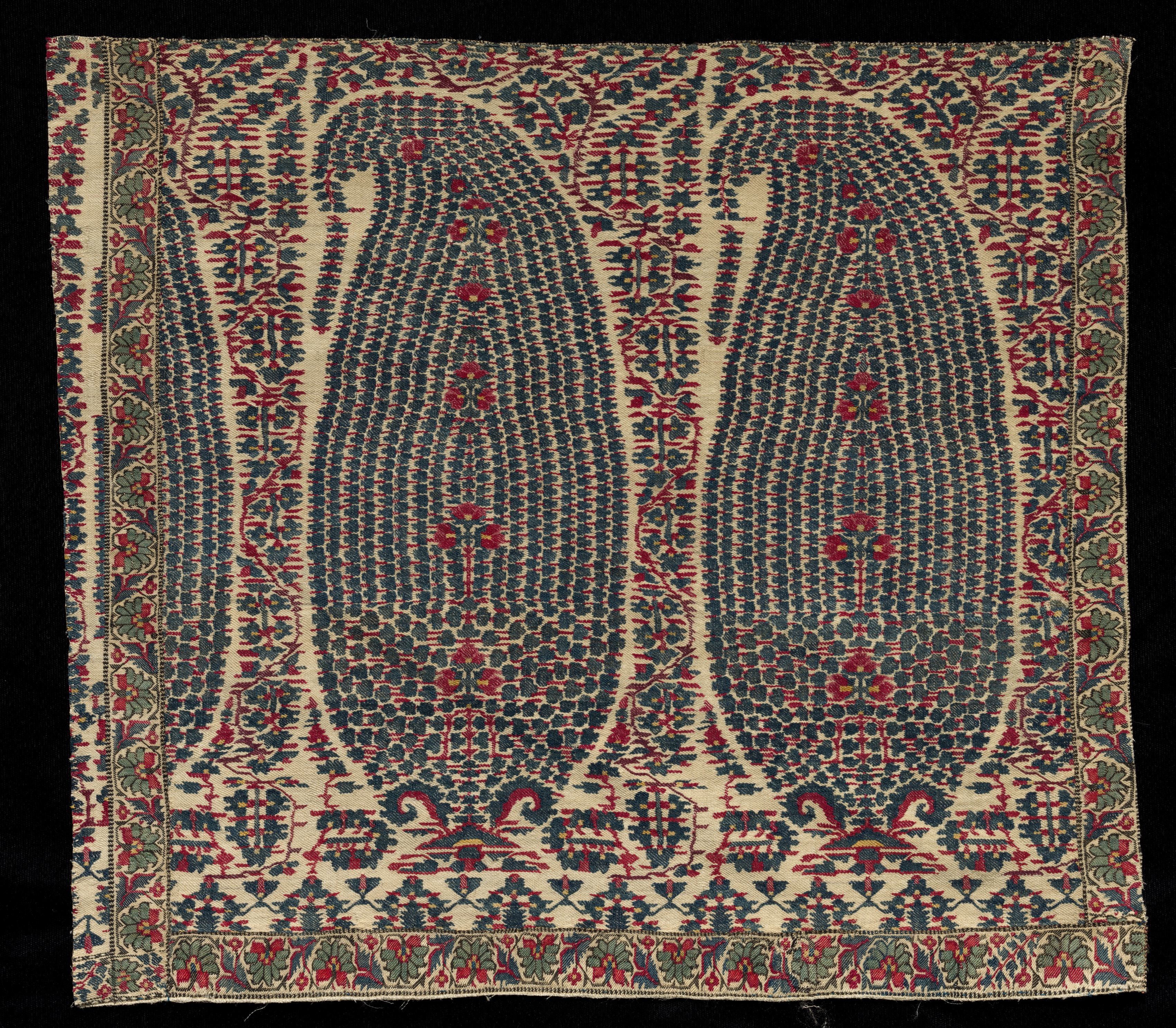The Cleveland Museum of Art
Collection Online as of April 25, 2024

Fragment of a Shawl Border
c. 1815–25
Overall: 35.9 x 40.3 cm (14 1/8 x 15 7/8 in.); Mounted: 54 x 58.4 cm (21 1/4 x 23 in.)
Gift of Dr. E. Rosencrantz 1934.330
Location: 237 Himalayan
Did You Know?
Red dyes for textiles could be made from pomegranate skins.Description
Many Kashmiri textiles, even those from the early 1800s, come down to us in fragments. This shawl border was once a part of a larger piece, which could have simply been draped over the body or stitched to the hem of a garment (as many European women did). Owning and wearing such luxury textiles would have been part of indicating one’s social status. Although incomplete, this work still shows the general pattern of the larger shawl, and it retains its vibrant and hypnotizing original color. Dyes were plant-based and are liable to wash out.- ?–1934Dr. E. Rosencrantz, San Francisco, CA, given to the Cleveland Museum of Art1934–The Cleveland Museum of Art, Cleveland, OH
- Ames, Frank. The Kashmir Shawl and Its Indo-French Influence. Woodbridge, Suffolk: Antique Collectors' Club, 1997.
- Himalayan Gallery 237 Rotation. The Cleveland Museum of Art, Cleveland, OH (organizer) (March 22-September 8, 2024).Himalayan Gallery 237 Rotation. The Cleveland Museum of Art, Cleveland, OH (organizer) (September 22, 2023-March 3, 2024).Nature Supernatural (Indian Painting rotation). The Cleveland Museum of Art, Cleveland, OH (organizer) (September 22, 2023-March 3, 2024).
- {{cite web|title=Fragment of a Shawl Border|url=false|author=|year=c. 1815–25|access-date=25 April 2024|publisher=Cleveland Museum of Art}}
Source URL:
https://www.clevelandart.org/art/1934.330